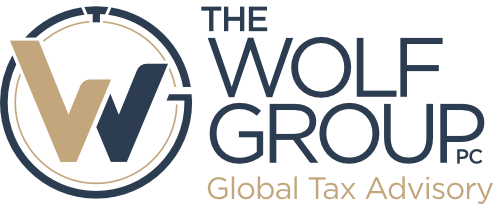New Schedules K-2 & K-3:
Frequently Asked Questions (FAQs) for Individuals Who Receive K-1s
Posted March 4, 2022
Although these new requirements mostly affect certain partnerships and S corporations, they may affect you if you are:
- An individual who receives a Schedule K-1 from a partnership or S corporation. In this case, you may not receive your K-1 (and new K-3, if applicable) until later than usual. This could delay your individual tax return filings.
- An individual who typically files Form 8865 as part of your individual income tax return to report ownership in a foreign partnership. If you file Form 8865, you are required to include the new schedules with your returns this year. See our Frequently Asked Questions for filers of Form 8865.
Schedule K-2 is a new 14- to 19-page form with up to 11 sections. It is filed as part of the partnership or S corporation tax return. It reports items of international tax relevance from the operation of the business. Since this form gets filed as part of the business return, you won’t see a copy unless you see the complete business tax returns.
Schedule K-3 is a 15- to 20-page form with up to 13 sections. It is basically an expansion of Schedule K-1 to provide greater detail to you on your share of the business’s international tax items. It is needed for the preparation of your individual income tax returns. This schedule is provided to both you and the IRS, and it reports your share of income, deductions, credit, and international informational reporting items. It may also include data needed for you to file certain international informational forms (such as Forms 5471, 8858, 926, 8621, and 8992) as part of your Form 1040, Individual Income Tax Return. Many of these forms have a $10,000 penalty for failure to file.
Even if the partnership or S corporation does not have foreign income or foreign assets, it may still need to file Schedules K-2 and K-3, which could delay your individual tax filings.
Formerly, Schedule K (on the business tax return) and Schedule K-1 (issued to you) did not require any specific format to provide international information. As a result, many details needed for the accurate preparation of your individual income tax returns were either lumped together on a few lines of Schedule K-1 or missing altogether.
Plus, information on international informational filing requirements (such as IRS Forms 5471, 926, 8992, 8865, and 8621, which carry large penalties) was often referenced in a footnote with unintelligible details and a caveat to “see your tax preparer.”
Per the IRS, this resulted “…in what could be a confusing array of statements attached to the schedules K and K-1. The new schedules K-2 and K-3 provide greater certainty and consistency, helping partners and shareholders to voluntarily comply with their filing and reporting obligations.”
Now, the IRS is requiring the more detailed Schedules K-2 and K-3 to provide this clarity, and it is motivating businesses and individuals to comply by imposing $10,000 penalties.
You will likely see two main differences this year:
- More detailed information will be provided to you for the preparation of your individual income tax filings.
- Your K-1s (and K-3s, if applicable) may arrive later this year. This may delay your individual tax filings.
In theory, the new forms won’t change your individual tax returns, but in practice, you may discover that you should have been filing certain forms all along. In theory, the same information that you received before in your Schedule K-1 statements and footnotes will now be provided in a standard, clear format. This shouldn’t change the forms and schedules that are required in your individual returns, but it should make it easier for you to prepare them.
In practice, however, now that entities will need to provide clear, extensive detail:
- Some partnerships and S corporations may find that they have foreign items that must be passed through to you that weren’t fully disclosed in the past, or
- The items that are being passed through to you may now be more apparent, bringing to light additional forms you should have been filing to report foreign ownership or foreign items.
If you discover that you should have been filing additional forms, you may need to amend prior returns or use one of the IRS’s amnesty programs to correct your past filings.
Maybe, but don’t count on it. Be prepared to file an extension. The IRS has already informed partnerships and S corporations that any of their returns with Schedules K-2 and K-3 will likely need to be filed on extension. This means it’s unlikely that many entity returns will be completed by April 15. And you won’t receive your Schedules K-1 and K-3 from the entities until they file their own returns.
The timing of your Schedules K-1 (and K-3, if applicable) will depend on how quickly your partnership or S corporation can finalize its business returns and issue you the Schedules K-1 and K-3. Right now, these forms are somewhat of a moving target.
As of late February 2022, the IRS continued to release new guidance and FAQs on Schedules K-2 and K-3. As it did so, it provided much needed clarifications on how the new forms must be completed and by whom. Businesses and tax practitioners are being cautious with the new filings since failure to properly complete or file the new schedules may subject the business and its owners to separate $10,000 penalties.
A few different factors may affect the timing for partnerships and S corporations to file their tax returns (and provide you with Schedules K-1 and K-3):
- As with any new form, it’s taking time for businesses to understand the Schedule K-2 and K-3 requirements, obtain the information, and comply.
- Since the IRS continues to update its guidance on these new forms, some companies are waiting for more clarity before they spend time or resources preparing the forms.
- Most businesses e-file their returns. Given the mail backlog at the IRS, many partnerships and S corporations want to be sure they can submit the new Schedules K-2 and K-3 as part of their e-filed tax returns rather than mailing their returns to the IRS.
The IRS has released a timeline for accepting e-filed returns with the new Schedules K-2 and K-3. The e-file release dates for partnerships (Form 1065) and S corporations (Form 1120-S) are given below.
Form Number Date Available
Form 1065, Schedules K-2 and K-3 March 20, 2022
Form 1120-S, Schedules K-2 and K-3 Mid-June 2022
Form 8865, Schedules K-2 and K-3 January 2023
Fortunately, the IRS is also offering a temporary workaround to enable businesses to e-file their returns sooner, before the official e-file dates. For a limited time, the IRS is allowing businesses to e-file their returns with Schedules K-2 and K-3 included as a PDF attachment (rather than in the body of the return itself). This is not typically an option for forms and schedules that are a required component of a tax return. In this case, however, the IRS has made an exception, to enable companies and individuals to continue e-filing while the IRS finishes updating its regular e-file technology.
This is good news for individuals expecting Schedules K-1 and K-3. If businesses choose to use this workaround, then they can finalize their returns—and issue you your Schedules K-1 and K-3—sooner.
Probably not. The IRS’s FAQs on Schedules K-2 and K-3, released in mid-February 2022, clarified that many partnerships and S corporations, including those that do not have foreign assets or operations, may need to file the new forms:
“In many instances, a partnership or S corporation with no foreign partners, foreign source income, no assets generating foreign source income, and no foreign taxes paid or accrued may still need to report information on Schedules K-2 and K-3. For example, if the partner or shareholder claims the foreign tax credit, the partner generally needs certain information from the partnership on Schedule K-3, Parts II and III, to complete Form 1116.”
This clarification came as a surprise to many partnerships and S corporations that do not have foreign items. Given the uncertainty and potential penalties, many of these businesses are taking a conservative approach and are now seeking to understand and file the new schedules.
We don’t advise this. You must sign your tax return under penalties of perjury to attest that the return is complete and accurate to the best of your knowledge. Signing under false pretenses constitutes fraud and can subject you to penalties and prison time. Filing a return without waiting on the Schedules K-1 and K-3 may make it hard to argue that your return was complete and accurate.
In addition, failure to incorporate information from the new Schedule K-3 carries a $10,000 penalty to you.
In most cases, yes.
However, if you must file Form 8865 to report your ownership in a foreign partnership, then you may need to paper file your 2021 individual income tax returns. The IRS has announced that Form 8865 will not be available for e-filing until January 2023. That said, some individual returns with Forms 8865 may still qualify for e-filing by attaching Schedule K-2 and K-3 information. See our Frequently Asked Questions for filers of Form 8865.
You should expect to receive a Schedule K-3 this year with organized, detailed information on the items formerly covered in Schedule K-1 (1065), lines 16 and 20c, or Schedule K-1 (1120-S), lines 14 and 17d, and the accompanying statements. Schedule K-3 will provide details on:
- The types of income and expenses incurred by the business and how much of each type is considered US or foreign
- Details to complete the international informational filings, including details on
- Foreign mutual funds and PFICs (Form 8621)
- Ownership in foreign corporations (Form 5471)
- Ownership in foreign partnerships (Form 8865)
- Other transfers, distributions, foreign ownership, or foreign matters (GILTI, FDII, QBAI, etc.)
- Other foreign items needed to accurately prepare your individual income tax returns and international informational filings
In theory, this is the same information that you received before in your prior years’ Schedule K-1 statements and footnotes. But now, instead of being buried, it will be provided in a standard, clear format that will make it easier to extract for use in your individual tax returns.
If your prior-year Schedules K-1 mentioned foreign items in lines 16 and 20c (1065) or lines 14 and 17d (1120-S), or in the accompanying statements, you should receive a Schedule K-3 for 2021.
If you do not receive a 2021 Schedule K-3, then you may need to disclose this on your individual tax return to protect yourself against the $10,000 penalty.
- IRS FAQ 16 indicates that a Form 8082, Notice of Inconsistent Treatment, may need to be filed to alert the IRS of the missing Schedule K-3.
- To be conservative, you may also want to file a Form 8275 Disclosure Statement. Note that if you take this approach, you will later need to amend your 2021 tax return if/when you do receive the missing Schedule K-3.
At the time of this blog post, the IRS was still making changes to its approach to Schedules K-2 and K-3 in response to push-back from tax professionals and other parties. In particular, the American Institute of Certified Public Accountants (AICPA) and other organizations were encouraging the IRS to delay the new Schedule K-2 and K-3 filing requirements, offer greater relief for 2021 filings, or otherwise waive first-year penalties.
We expect that the IRS’s requirements and guidance will continue to evolve over the coming weeks.
At The Wolf Group, we are monitoring these developments and continuing to evaluate the approaches that are in the best interest of our clients. If you have questions on the new Schedules K-2 and K-3 or need assistance complying with the additional foreign reporting, please contact us. The Wolf Group has assisted clients with foreign disclosures and related tax form preparation for nearly four decades.
Pursuant to Circular 230, promulgated by the Internal Revenue Service, any US tax advice contained in the body of this writing is not intended or written to be used, and cannot and should not be used, by any recipients as specific tax advice related to their facts and circumstances. Taxpayers should consult their local tax professional and/or attorney to obtain specific tax advice related to their facts and circumstances.
Why The Wolf Group?
Since 1983, we’ve worked with clients in the United States and abroad on international tax matters. We have a long history of “cleaning up” complex tax returns, reporting foreign assets, and reconstructing financial records.
Check out our extensive team of CPAs, all with vast international tax experience.
Looking for a Nexia International Partner?
We’re an active member of Nexia International, a global network of independent accountancy, tax and business advisors with over 250 firms around the globe.





